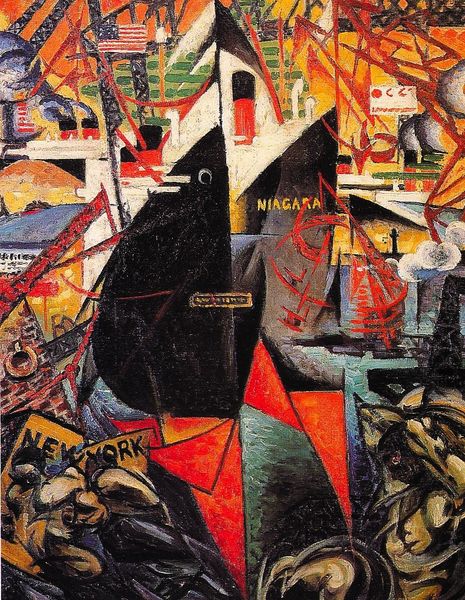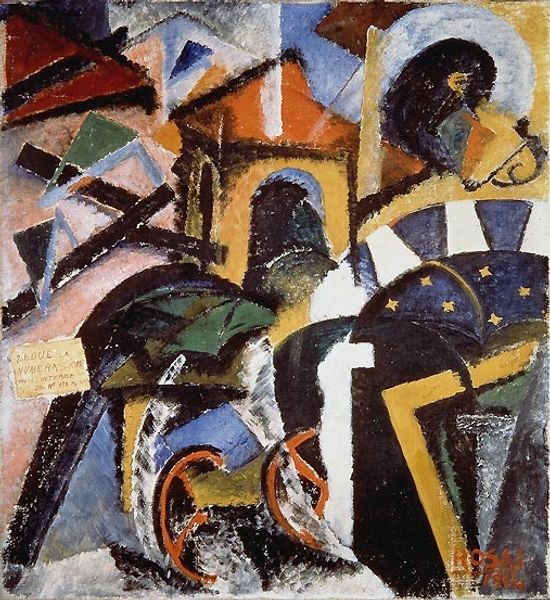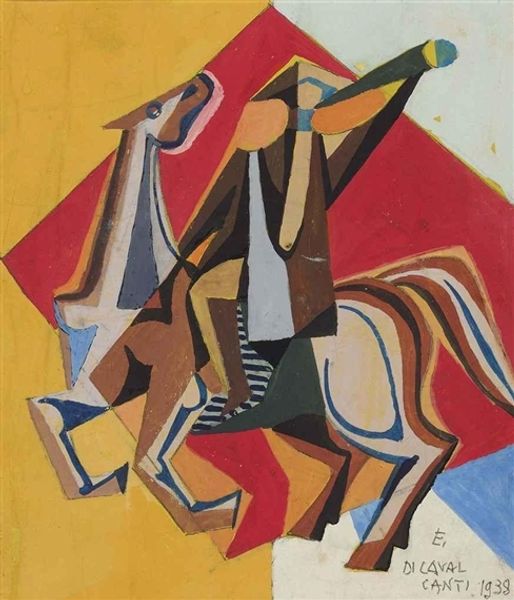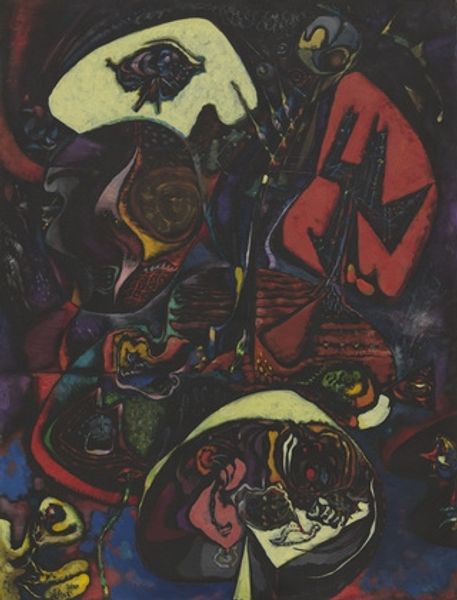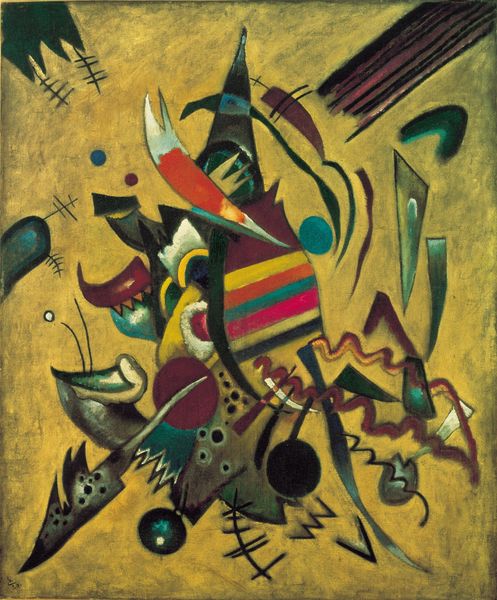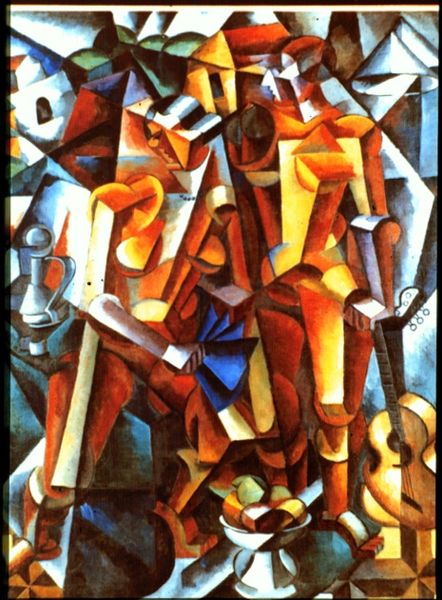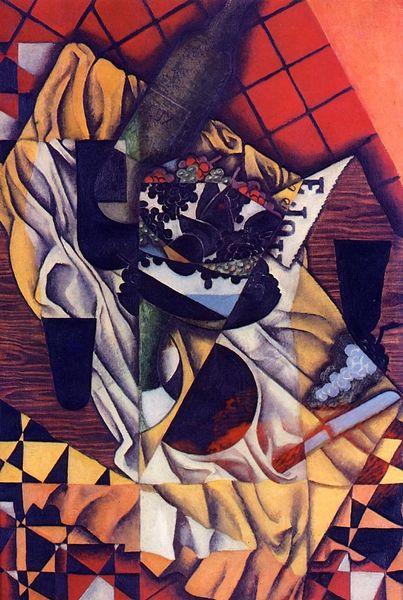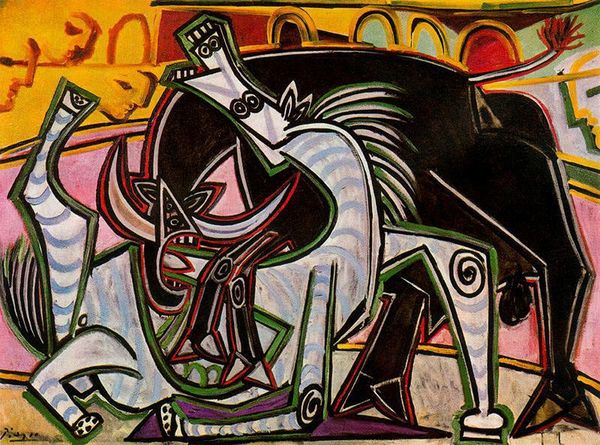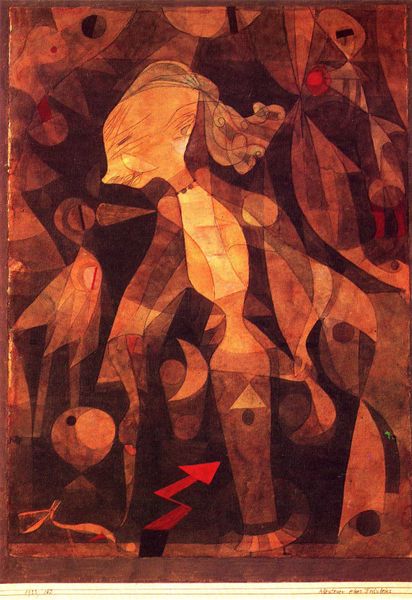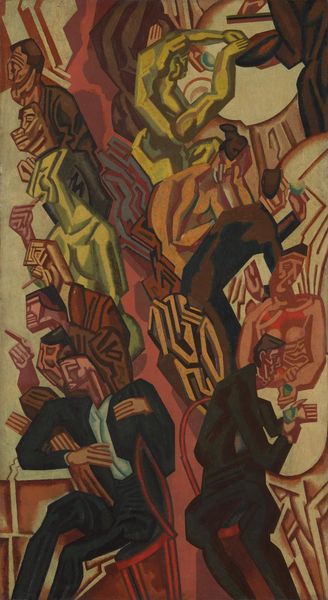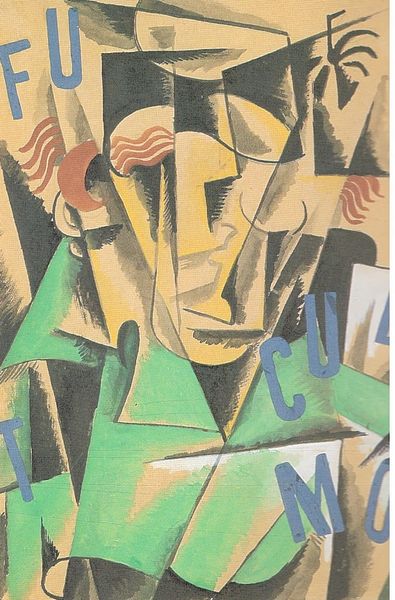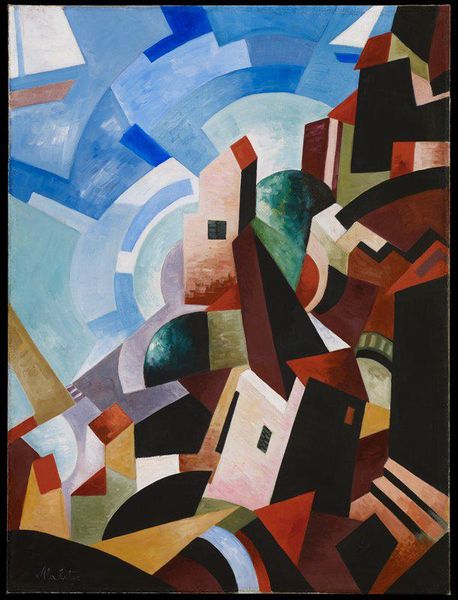
painting
#
cubism
#
painting
#
geometric
#
cityscape
#
futurism
Dimensions: 130.4 x 97.1 cm
Copyright: Public domain US
Curator: Let's turn our attention to Jean Metzinger's striking 1912 oil on canvas, "At the Cycle-Race Track", currently housed here at the Guggenheim. Editor: Whew, that’s a whole lot of organized chaos, isn’t it? It’s like the Tour de France collided with a geometry textbook. Seriously, it gives you the same rush as watching a cyclist whiz by – all that kinetic energy captured in these angular fragments. Curator: Precisely! Metzinger masterfully combines elements of both Cubism and Futurism. Notice the fracturing of form and the multiple perspectives; he’s attempting to represent movement and the dynamism of modern life on a single plane. Observe how the cyclist is fragmented, yet we perceive their action. Editor: Yeah, he totally dissected the poor fella! It's cool though, I see the stadium, the crowd all jumbled up, almost as if his perception of the race and himself blends with everyone present.. Did Metzinger himself cycle or something? Curator: While there's no direct record of Metzinger as a cyclist, he was deeply immersed in avant-garde circles fascinated by technology and speed. The fractured forms symbolize speed while the repetition implies continuous movement and recall Marey’s chronophotography. Consider how "At the Cycle-Race Track" visualizes the temporal dimension – what traditional painting could not capture. Editor: I’d call it a ‘sensory overload’ painting! All that fractured form also feels oddly accurate: when a cyclist dashes, it’s a flurry of color, adrenaline, sounds all competing to be the primary perception. Does the combination of colors, primarily neutral, help create the sense of velocity, or it would have worked even if brighter? Curator: I think the use of predominantly muted and earthy tones enhances the focus on structure and the geometric interplay of forms, whereas a palette rich with pure colors would draw attention from his geometric innovations, thus affecting the feeling of movement. Editor: The artist took the bicycle apart to figure out its essence. Metzinger forces us to think and feel it more profoundly than a realistic rendition ever could, he invites us to experience what modernity represents at that precise moment. Curator: An astute observation. He doesn't simply represent a race; he translates experience, visually. This blending of philosophies epitomizes the avant-garde of the era and reveals his unique aesthetic preoccupations. Editor: The past blasting toward the future – all cut into diamond pieces. I guess it works!
Comments
No comments
Be the first to comment and join the conversation on the ultimate creative platform.
